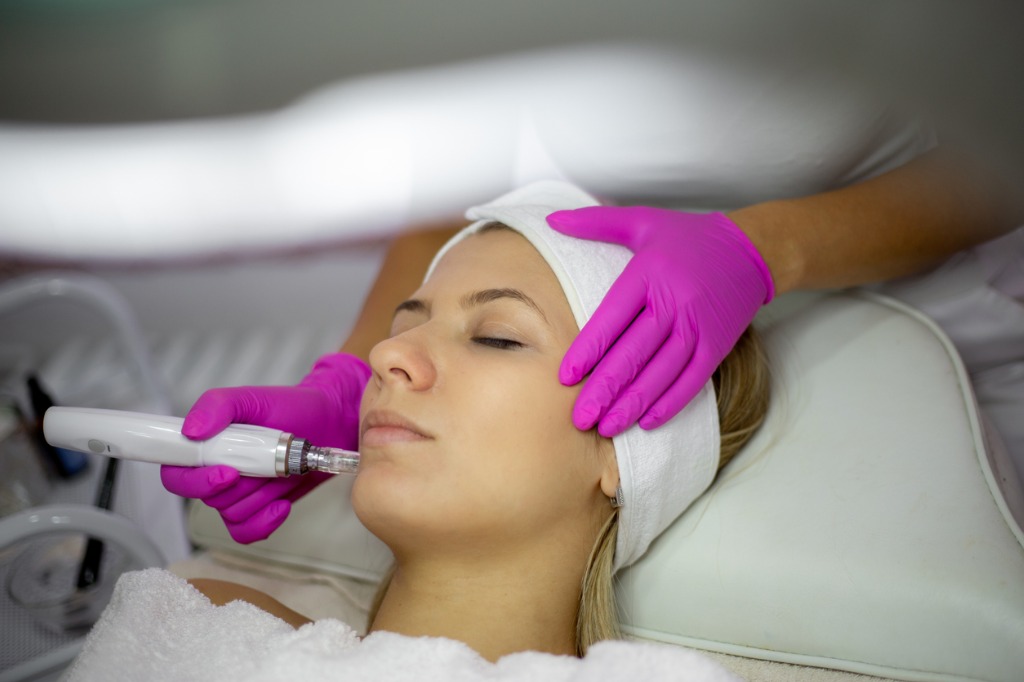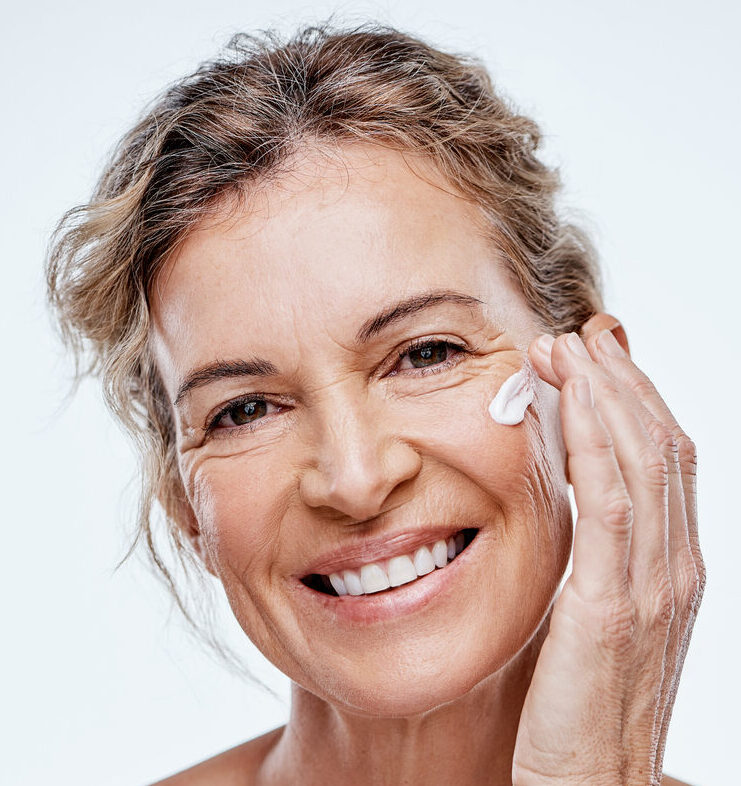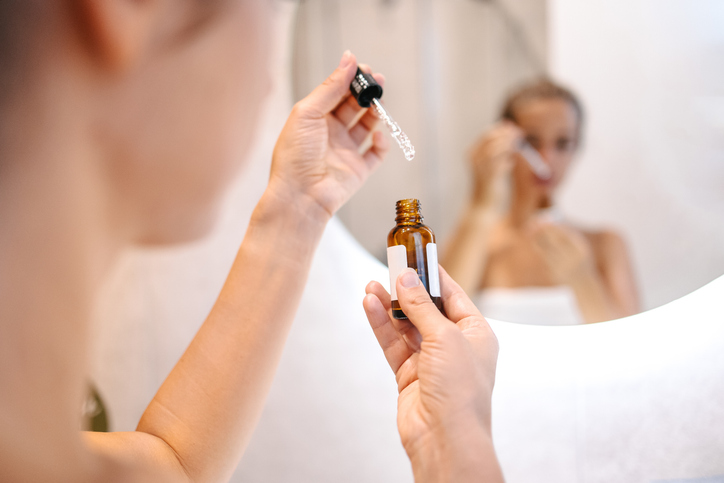Acne can be a challenging issue to tackle, whether you’re in your teens or adulthood.…

Treat Unwanted Dark Spots on Your Skin with Microneedling
Many factors contribute to the unevenness of an individual’s skin tone, with hyperpigmentation being a common reason. Depending on its severity, it could be a negligible feature or a cause for discomfort. Fortunately, there are ways to prevent or treat this occurrence, either by yourself or with proper care from your dermatologist and aestheticians.
What is Hyperpigmentation?
Hyperpigmentation is a term used to describe darker patches of skin that show up as small marks, cover wider areas, or even appear all over the entire body. It is typically a result of your body producing excess melanin, which is the pigment that colors the skin. There are many types, including the following.
- Post-inflammatory hyperpigmentation. Occurs as a result of acne or other skin inflammations and injuries.
- Melasma. Develops due to hormonal changes, usually takes place during pregnancy, and commonly takes shape on the face and stomach.
- Sunspots. Emerges as spots on the hands, face, and other areas of the skin that are frequently exposed to the sun over time. These marks are also called solar lentigines or liver spots.
Keep in mind that Addison’s disease, along with certain medications and chemotherapy drugs can also cause hyperpigmentation.
On its own, the increase of pigmentation doesn’t cause any harm. It may be a symptom of a different medical condition, though, so make sure to bring this up with your doctor anyway. They can request a physical exam or a skin biopsy and use what they can gather from your medical history to make a proper diagnosis.
Preventing Hyperpigmentation
Prevention is still better than cure. So, if you want to be more active in taking care of your skin, here are some of the best ways to avoid unwanted dark spots.
- Stop picking at your face. Resist the urge to scratch mosquito bites, pop pimples, or squeeze blackheads. Whenever you pick at these areas, you are only increasing their inflammation, and this can lead to hyperpigmentation.
- Maintain skin moisture. Regularly applying a good moisturizer helps rejuvenate your skin and bring back its lipid (fat) barrier. As a result, you will be more protected against the sun’s rays.
- Use a gentle skincare routine. Stronger items that may seem more effective can actually sting, burn, and inflame your skin. Use Vitamin-C-based products to help lighten areas of the skin.
- Stay away from the sun. Excessive sun exposure can damage your skin. Always wear sunscreen to keep yourself protected from its rays, even on days without direct sunlight.
In the event that you still develop hyperpigmentation, you could also consider professional treatment.
Microneedling
Microneedling, also called collagen induction therapy, is a cosmetic procedure designed to help reduce stretch marks and acne scars. This minimally invasive procedure is also known to help anti-aging procedures like eyelid surgery.
Cost
Since microneedling is considered to be a cosmetic surgery and not a medical procedure, it isn’t covered by insurance. However, some doctors and offices may offer treatment plans that allow you to better manage your payments. Be prepared to still spend $100 to $700 for each session, though.
It’s worth noting that hyperpigmentation could reside in both the epidermis and dermis. Pigmentation found in the dermis will require more sessions. Consult with your dermatologist to get a more accurate breakdown and calculate the cumulative costs ahead of time. Factor in any potential income you may miss due to potential absences at work.
Risks
Make sure you select a reputable clinic and dermatologist before committing to a microneedling treatment to minimize the number of risks you may encounter. These could include the following.
- Patients taking blood thinners or are prone to bruising and bleeding may expect some bruises after the procedure. These will fade within four or five days.
- Needles that go 1.55mm deep and beyond, or puncture the skin too much, could permanently irritate and inflame the skin.
- Bacterial infections. Swelling, pain, and redness may occur if the treated skin and the machine used aren’t properly cleansed and sterilized. Ask the aesthetician how the clinic sterilizes the equipment to be used beforehand. In the event that you develop an infection, consult your dermatologist to have them prescribe the necessary antibiotics.
- Allergic reactions. Individuals with more sensitive skin will need to inform their aestheticians before undergoing the treatment as their skin could act up and become itchy. They’ll know to make adjustments to the serums or numbing cream they use throughout the treatment.
How It’s Done
Like every other surgery, your doctor will give you a pre-treatment regimen to adhere to for a couple of days or weeks before your scheduled procedure date. While the exact regimen varies for each patient, it’s important to note that microneedling works best on properly hydrated skin. Thus, moisturizing thoroughly and drinking the recommended amount of water every day is essential.
Make sure you arrive makeup-free to your appointment because a topical numbing cream will be spread on the skin in preparation for the procedure. A pen-like device then applies hundreds of fine needles on the darker patches of skin to make minuscule tears. Generally, your dermatologist should maintain a gentle approach to the procedure, making it more beneficial to spread it out into multiple sessions.
Significant improvements are to be expected after around five sessions, with two to four weeks in between each of them. Rushing this process may result in skin irritation, further contributing to the development of hyperpigmentation, so be patient.
The collagen produced as a result of the treatment helps smooth your skin and even out your complexion. However, it is fairly normal to experience some redness on your skin. This should fade away after a few hours. Avoid using heavy makeup, sweating, and exposing yourself to direct sunlight to give your skin time to properly heal.
Seek Professional Help
Hyperpigmentation may not necessarily be a skin condition in and of itself, but it’s still best to get yourself checked to determine whether it’s a symptom of a different illness. If your case is just regular hyperpigmentation, then you can reduce the presence of your unwanted dark spots and gain a more even skin tone over time with the microneedling treatment.
Get in touch with the Vargas Face & Skin Center to have your skin hyperpigmentation assessed and treated today!








This Post Has 0 Comments